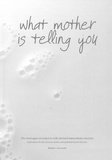What mother is telling you
Messages encoded in milk-derived extracellular vesicles - Implications for the immune system and epithelial barrier function

Zonneveld, Marijke
- Promoter:
- prof.dr. M.H.M. (Marca) Wauben & prof.dr. J. (Johan) Garssen
- Co-promoter:
- dr. E.N.M. (Esther) Nolte - 't Hoen & dr. F.A.M. (Frank) Redegeld
- Research group:
- Wauben , Garssen , Extracellular vesicles in the context of viral and bacterial infections
- Date:
- June 27, 2017
- Time:
- 14:30 h
Summary
In this thesis we describe the effects of extracellular vesicles (EV) from human milk on the both the adaptive and innate system, as well as on epithelial barrier function. In order to study these effects, we designed an isolation and storage protocol specifically for the purpose of isolation of EV from human milk. Using this protocol we were able to perform in-depth proteomics, showing that immune and epithelial cells are the most likely producers of EV in milk. Functionally, we showed that EV stimulated epithelial migration, dampened the activation of CD4 T cells by CD3/CD28 without inducing regulatory T cells, and that milk EV dampened activation of Toll-like receptor (TLR) 3 and TLR9 by their specific ligands, but not TLR2 and TLR4. Dampening the innate and adaptive immune respones could create a favorable environment for the induction of immune tolerance, allowing for the colonization of the infant intestine by commensals, and induction of tolerance towards environmental antigens.
In recent years, there has been an increase in allergy in children. This can be seen as a failure in the proper induction of immune tolerance. Although maternal allergy is a risk factor for the development of allergy, the contribution of milk is unclear. In this thesis, we described the impact of maternal allergy on milk EV ability to inhibit CD4 T cell activation. Although EV from both allergic and non-allergic mothers inhibited CD4 T cell activation, EV from allergic mother were significantly less potent. The content of milk EV was assessed by RNA deep sequencing and proteomics. Although the content of EV was similar between groups, some miRNA's and proteins were identified which will be further investigated in future.
In summary, we show that human milk-derived EV impact the innate and adaptive immune system and that they are involved in the maintenance of the epithelial barrier.